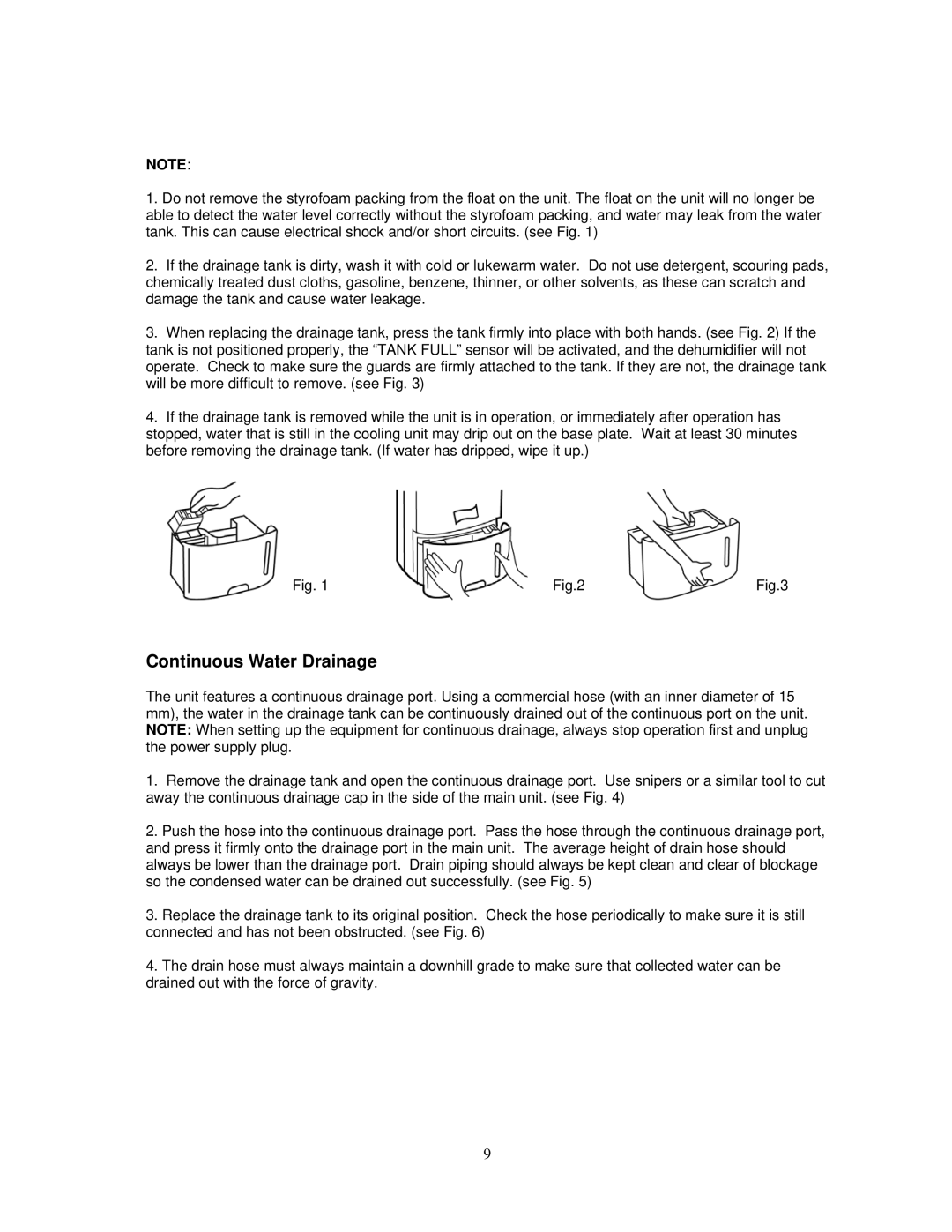PORTABLE DEHUMIDIFIER specifications
The Soleus Air Portable Dehumidifier is a standout solution for maintaining optimal humidity levels in your living environment. Engineered with advanced technology, this portable dehumidifier excels in removing excess moisture from the air, ensuring a comfortable atmosphere in homes, offices, and other indoor spaces.One of the key features of the Soleus Air Portable Dehumidifier is its high-capacity extraction of moisture. With the ability to remove up to 70 pints of moisture per day, it effectively combats dampness and prevents the growth of mold and mildew. The adjustable humidity settings allow users to customize the desired humidity level, ensuring that their space remains comfortable throughout the year.
Equipped with a user-friendly digital display, the Soleus Air Portable Dehumidifier simplifies operation. The digital controls make it easy to set humidity levels, timer functions, and fan speeds. This device also features a convenient auto shut-off function, which activates when the water reservoir is full, preventing overflow and potential water damage.
The built-in continuous drainage option is another hallmark of this dehumidifier, allowing for uninterrupted moisture removal. By connecting a standard garden hose to the unit, users can set it to run continuously without the need to manually empty the water tank. This feature is particularly useful in areas prone to high humidity, such as basements.
Lightweight and portable, the Soleus Air Dehumidifier is designed with easy-rolling caster wheels. This makes it simple to move from room to room, adapting to various spaces as needed. The compact design does not compromise on performance, ensuring that even tight spaces benefit from effective dehumidification.
In terms of energy efficiency, the Soleus Air Portable Dehumidifier follows modern energy standards, which helps reduce electricity consumption while maintaining powerful performance. Many models also come equipped with an Energy Star rating, indicating that they meet strict energy efficiency guidelines.
Overall, the Soleus Air Portable Dehumidifier is an effective, efficient, and user-friendly device. Its combination of high moisture extraction capacity, functionality, and versatility makes it a valuable addition to any home or office, ensuring that the indoor air quality is maintained at a comfortable level. Whether for daily use or seasonal application, this dehumidifier represents a smart investment for health-conscious consumers.

